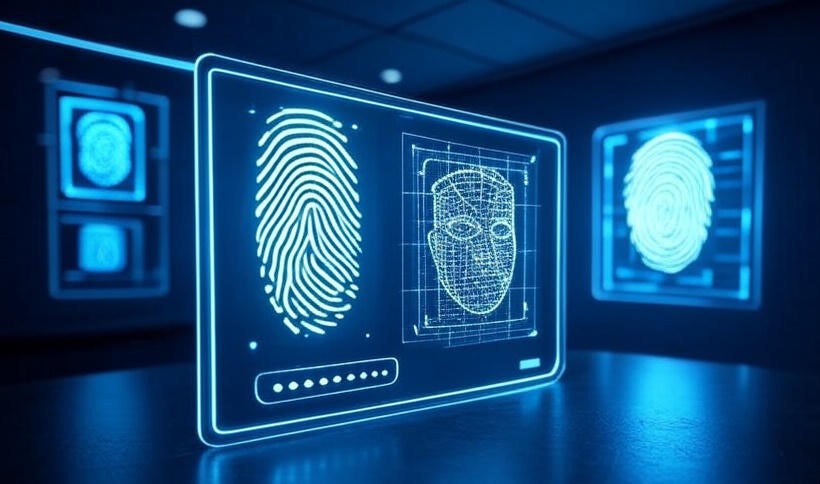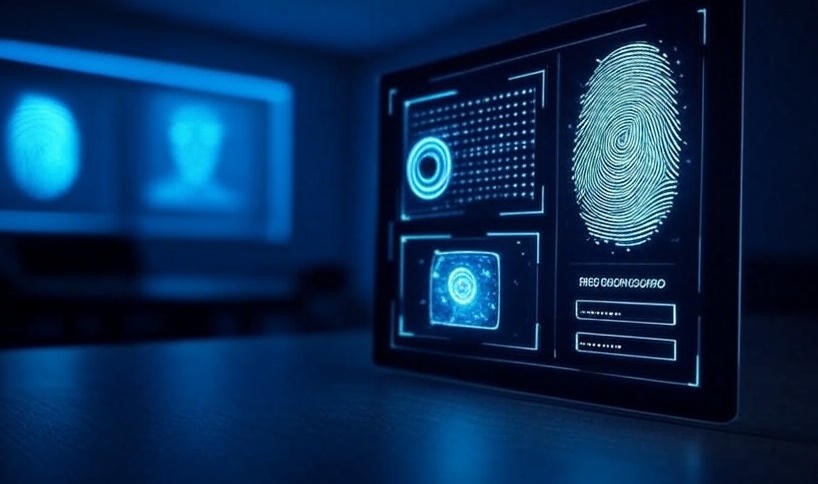Passwords have been the cornerstone of digital security for more than half a century. From the first mainframe computers to today’s cloud-based services, we have relied on strings of characters to prove identity and secure information. Yet in 2025, the password is showing its age. Data breaches, phishing attacks, and password fatigue have made traditional authentication methods vulnerable and inconvenient.
Enter biometrics. Fingerprints, facial recognition, voice patterns, and even behavioral cues are now being used to verify who we are—without requiring us to remember a single password. Across industries, biometric systems are rapidly becoming the gold standard for authentication.
In this article, we’ll explore how biometric authentication is replacing passwords, what technologies make this possible, the challenges that remain, and what organizations need to know as they prepare for a passwordless future.
Why Passwords Are No Longer Enough
Password Fatigue and Security Risks
The average internet user today manages close to 100 online accounts. Remembering unique, complex passwords for each one is impossible, so people tend to reuse them. This practice is a hacker’s dream: once a single password is compromised, attackers can gain access to multiple accounts.
Even when users create strong passwords, cybercriminals use advanced cracking techniques, phishing emails, and keylogging malware to steal credentials. According to Verizon’s 2024 Data Breach Investigations Report, over 80% of breaches involve stolen or weak passwords.
Rising Costs of Breaches
For businesses, the financial impact is staggering. IBM’s 2024 Cost of a Data Breach report notes that compromised credentials are among the most expensive causes of breaches, averaging $4.45 million per incident. Beyond money, companies face reputational damage and loss of customer trust.
Passwords have become a weak link in cybersecurity—and it’s clear that a better solution is needed.
The Rise of Biometric Authentication
What Is Biometric Authentication?
Biometric authentication uses unique physical or behavioral characteristics to verify identity. Unlike passwords, which are knowledge-based, biometrics rely on inherent traits that are much harder to steal or replicate.
Common biometric methods include:
-
Fingerprint recognition
-
Facial recognition
-
Iris and retina scans
-
Voice recognition
-
Behavioral biometrics (typing rhythm, mouse movements, device interaction patterns)
Why Biometrics Outperform Passwords
-
Convenience: Users don’t need to remember or type anything. A glance or touch unlocks access instantly.
-
Security: Biometric traits are unique to individuals, making them more resistant to guessing or brute force attacks.
-
Speed: Authentication takes seconds, improving user experience while maintaining high security.
-
Continuous protection: Behavioral biometrics monitor users in real-time, detecting anomalies even after login.
These benefits explain why organizations are moving away from passwords toward biometrics and other passwordless methods.
From Biometrics to Passkeys: The Evolution of Authentication
Understanding Passkeys
Passkeys are a new authentication standard built on public-private key cryptography. Instead of memorized passwords, passkeys use device-stored private keys, often protected by biometric verification such as Face ID or fingerprint scans.
When a user logs into a service, the device proves identity by signing with the private key, while the service verifies it with the corresponding public key. The private key never leaves the device, making it resistant to phishing and server-side breaches.
Major Industry Moves
-
Microsoft announced that by August 2025, its Authenticator app will fully phase out passwords, relying on passkeys and biometrics.
-
Apple and Google have already rolled out passkey support across iOS, Android, Chrome, and Safari.
-
The UK government has begun implementing passkeys for public services, citing an average login time of 8 seconds versus nearly 70 with passwords and two-factor authentication.
-
Mastercard has launched biometric and passkey services for secure payment authentication.
These moves show that biometric-backed passkeys are not just a trend—they are quickly becoming the global standard.
Real-World Adoption Stories
Microsoft and Password Elimination
Microsoft has been a pioneer in the passwordless movement, introducing Windows Hello for facial and fingerprint recognition. Now, its shift to passkeys in Authenticator represents a decisive step toward eliminating passwords altogether.
Accenture’s Global Transition
Consulting giant Accenture migrated over 600,000 employees to passwordless authentication, replacing passwords with biometrics and PINs. The transition took several years but resulted in stronger security and improved employee satisfaction.
Government Services
The UK’s embrace of passkeys highlights how governments are adopting biometric authentication to streamline citizen access while improving security and cutting costs.
The Technology Behind Biometric Authentication
FIDO2 and WebAuthn Standards
The FIDO2 (Fast Identity Online) and WebAuthn standards provide the framework for passwordless authentication. These protocols ensure that credentials are unique per website, stored locally on devices, and protected by biometrics. Unlike passwords, they cannot be phished or reused.
Device Integration
Modern smartphones and laptops come equipped with biometric sensors:
-
Apple’s Face ID and Touch ID
-
Android’s fingerprint and facial recognition systems
-
Windows Hello for PCs
These hardware features make biometric authentication accessible to billions of users worldwide.
Behavioral Biometrics
Beyond fingerprints and faces, behavioral biometrics add an invisible layer of protection. By monitoring how users type, swipe, or move their devices, systems can detect imposters even after login. This continuous authentication reduces risks from stolen devices or insider threats.
Challenges and Limitations of Biometric Authentication
Privacy Concerns
Biometric data is highly sensitive. Unlike passwords, it cannot be changed if stolen. This raises concerns about how biometric templates are stored, shared, and protected. Laws like the EU’s GDPR and U.S. state-level biometric privacy acts are beginning to set standards, but global regulation remains uneven. How Biometric Authentication is Replacing Passwords.
Security Risks
While biometrics are harder to steal than passwords, they are not foolproof. Hackers have created fake fingerprints, facial masks, and voice recordings to spoof systems. This makes multimodal authentication—using multiple biometric factors—an important safeguard.
Adoption Barriers
-
Legacy systems still rely heavily on passwords.
-
Not all devices support advanced biometric sensors.
-
Users may resist change or worry about privacy implications.
These hurdles mean passwords will not disappear overnight, but the transition is clearly underway.
Benefits for Businesses
Enhanced Security
By reducing reliance on passwords, businesses minimize phishing risks, credential stuffing, and insider fraud.
Improved User Experience
Customers and employees enjoy faster, simpler logins, boosting satisfaction and productivity.
Cost Savings
Password resets are expensive—each one costs organizations around $70 on average. Biometric authentication reduces helpdesk calls and IT overhead.
Competitive Advantage
Companies that adopt passwordless, biometric-backed systems demonstrate leadership in security and innovation, enhancing brand trust.
Implementation Guidance for Organizations
-
Start Small: Pilot biometric authentication in low-risk systems before expanding.
-
Adopt Standards: Use FIDO2 and WebAuthn to ensure interoperability and security.
-
Educate Users: Provide training on how biometrics work and how privacy is protected.
-
Offer Recovery Options: Have secure alternatives in case a biometric sensor fails.
-
Monitor Continuously: Incorporate behavioral biometrics for real-time fraud detection.
Future of Biometric Authentication
The future promises even more sophisticated forms of authentication:
-
Multimodal biometrics combining fingerprints, voice, and behavioral patterns.
-
Advanced modalities such as eye movement, brainwave patterns, and heart rhythms.
-
Decentralized identity systems where users control their own biometric credentials without central storage risks.
As technology evolves, the balance between security, convenience, and privacy will shape adoption.
FAQs
1. Is biometric authentication completely secure?
“No system is 100% secure. How Biometric Authentication is Replacing Passwords shows that while biometrics are far stronger than traditional credentials, they can still be spoofed or compromised. Combining biometrics with cryptographic standards like FIDO2 provides the highest level of protection.”
2. What happens if biometric data is stolen?
If a biometric template is stolen, it cannot be changed like a password. This is why secure storage, encryption, and privacy laws are critical.
3. Will passwords disappear completely?
Not immediately. Legacy systems and certain use cases will still require passwords for the foreseeable future. However, their role will shrink significantly as biometrics and passkeys gain adoption.
4. Are behavioral biometrics reliable?
Yes, behavioral biometrics are increasingly accurate thanks to AI and machine learning. They provide continuous authentication, adding another layer of security without burdening users.
5. How can businesses start implementing biometric authentication?
Start with devices and applications that already support biometrics, adopt standards like FIDO2, and expand gradually while educating users and building trust.
Conclusion
The password’s decline has been long anticipated, and now the shift is truly underway. Organizations from tech giants to governments are embracing biometrics and passkeys as secure, convenient alternatives.
While challenges remain—especially around privacy and adoption—biometric authentication offers clear advantages. It is faster, harder to compromise, and less burdensome for users. For businesses, it means stronger security, lower costs, and happier customers.
Ultimately, how biometric authentication is replacing passwords is not just a matter of technology, but of trust and usability. By adopting biometric systems responsibly, we can move toward a safer, more seamless digital future where security is both strong and user-friendly.












